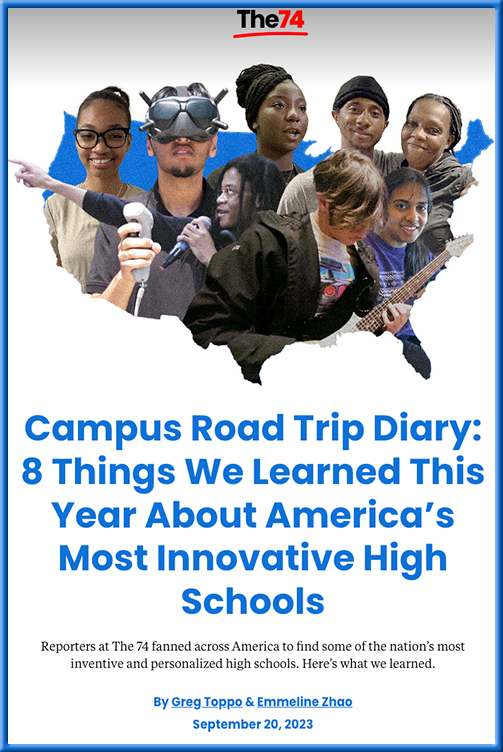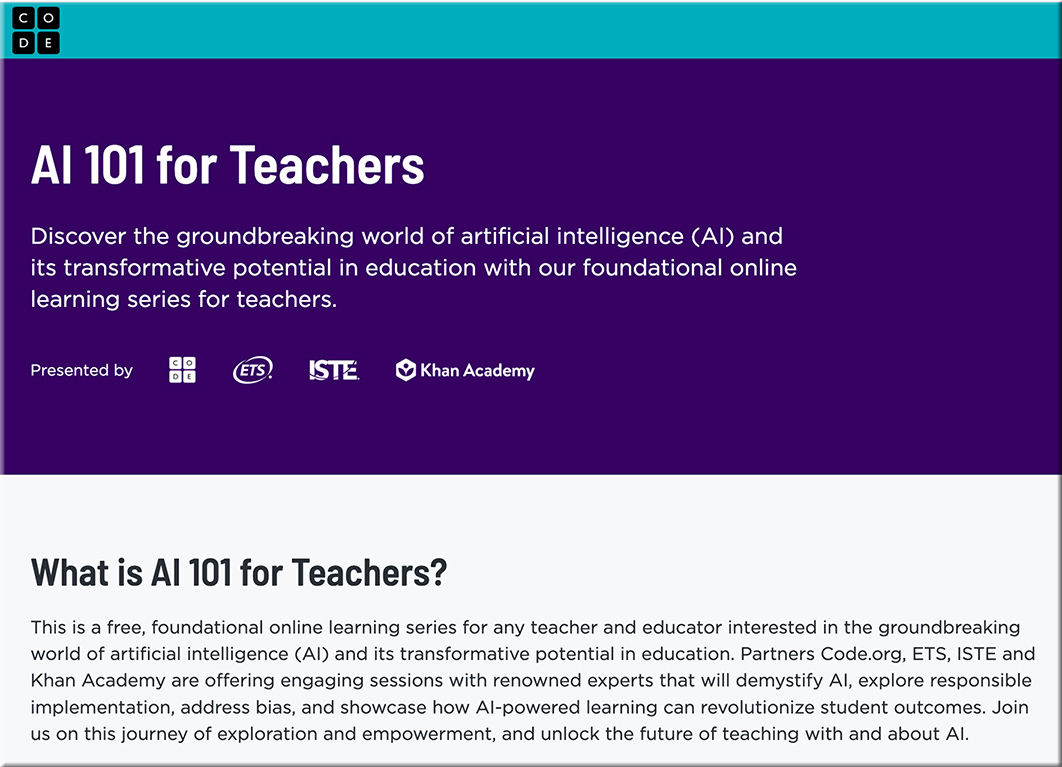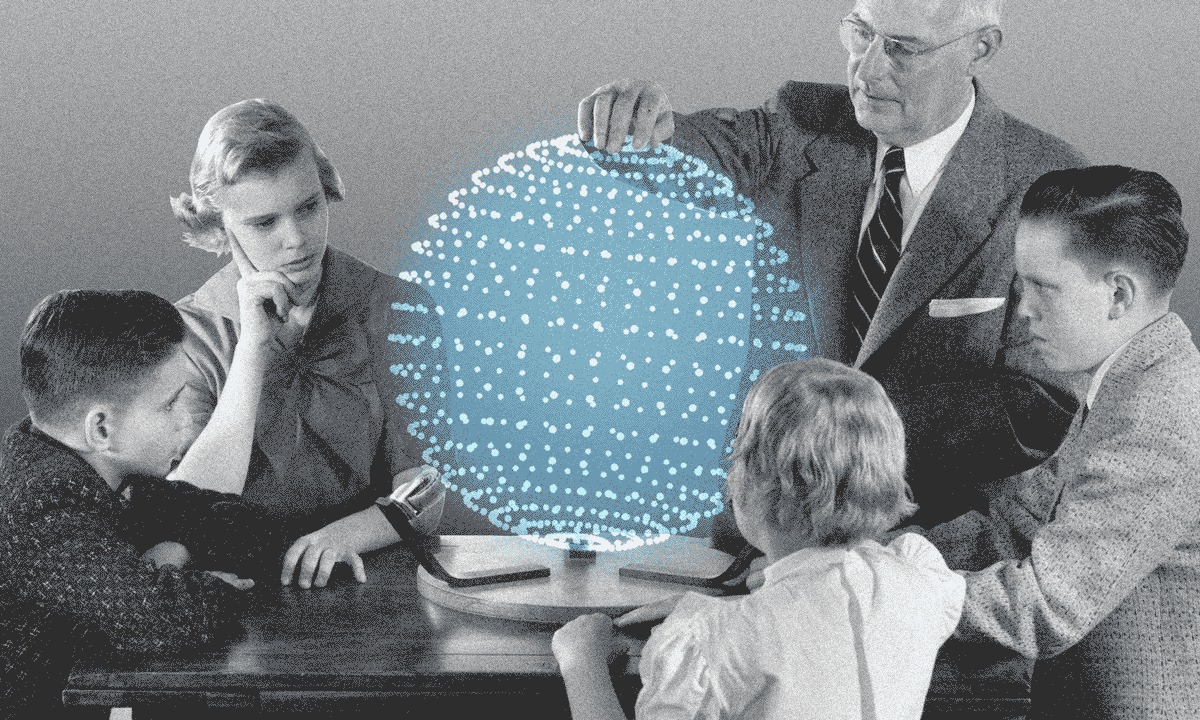In Iowa, a “Billy Madison Project” Yields a Different Way to do School — from by Sam Chaltain
A great flood reveals a new path . . .
The idea was simple: ask sixty community leaders to fan across the city’s public schools, follow in the footsteps of its youngest citizens, and report back on what they saw.
Fifty-nine said yes. What they found, Pickering says, “were kids with dead eyes. Kids not engaged. And kids who knew that school was a game – and the game was rigged.”
So the Billy Madison team used its findings to design a prospective high school that would actually produce what its participants said they wanted to see:
Let kids pursue their passions. Give them real work to do. And get them out of the school building, and in the community.
Passion. Projects. People.
How 9 of the World’s Most Innovative Schools Ignite Children’s Love for Learning — from learntrepreneurs.com by Eva Keffenheim
And equip the next generation to become changemakers.
This thought-provoking discussion delves into the topic of system replacement in education. Is school transformation possible without replacing the existing education system? Joining [Michael] to discuss the question are Thomas Arnett of the Christensen Institute and Kelly Young of Education Reimagined.
In an educational landscape that constantly seeks marginal improvements, [Michael’s] guests speak to the importance of embracing new value networks that support innovative approaches to learning. They bring to light the issue of programs that remain niche solutions, rather than robust, learner-centered alternatives. In exploring the concept of value networks, [Michael’s] guests challenge the notion of transforming individual schools or districts alone. They argue for the creation of a new value network to truly revolutionize the education system. Of course, they admit that achieving this is no small feat, as it requires a paradigm shift in mindset and a careful balance between innovation and existing structures. In this conversation, we wrestle with the full implications of their findings and more.
From DSC:
This reminds me of the importance of TrimTab Groups who invent or test out something new apart from the mothership.
Technology in education — from unesco.org by ; via Eva Keffenheim
A tool on whose terms?
The 2023 GEM Report on technology and education explores these debates, examining education challenges to which appropriate use of technology can offer solutions (access, equity and inclusion; quality; technology advancement; system management), while recognizing that many solutions proposed may also be detrimental.
The report also explores three system-wide conditions (access to technology, governance regulation, and teacher preparation) that need to be met for any technology in education to reach its full potential.
Bloom Academy is the first and only self-directed learning center in Las Vegas – microschooling as true, nontraditional and permissionless education alternative. 5 Questions with Microschool Founders Sarah & Yamila.https://t.co/RvxtwGXvkZ
— National Microschooling Center (@microschooling) September 27, 2023
Campus Road Trip Diary: 8 Things We Learned This Year About America’s Most Innovative High Schools — from the74million.org by Greg Toppo & Emmeline Zhao
Since last spring, journalists at The 74 have been crossing the U.S. as part of our 2023 High School Road Trip. It has embraced both emerging and established high school models, taking us to 13 schools from Rhode Island to California, Arizona to South Carolina, and in between.
It has brought us face-to-face with innovation, with programs that promote everything from nursing to aerospace to maritime-themed careers.
At each school, educators seem to be asking one key question: What if we could start over and try something totally new?
What we’ve found represents just a small sample of the incredible diversity that U.S. high schools now offer, but we’re noticing a few striking similarities that educators in these schools, free to experiment with new models, now share. Here are the top eight:
.
.
.

.
Empowering Parents: School Choice and Technology — from obviouslythefuture.substack.com
Ep 2 | Joe Connor, Odyssey Education, ESAs, Streamlined Technology Platform, Informed Choices
What does it take to empower parents and decentralize schooling? Why is a diversity of school models important to parents? Are we at a tipping point?
.
PROOF POINTS: Lowering test anxiety in the classroom — from hechingerreport.org/ by Jill Barshay
Review of 24 studies finds quizzes boost achievement and alleviate stress over exams
Several meta-analyses, which summarize the evidence from many studies, have found higher achievement when students take quizzes instead of, say, reviewing notes or rereading a book chapter. “There’s decades and decades of research showing that taking practice tests will actually improve your learning,” said David Shanks, a professor of psychology and deputy dean of the Faculty of Brain Sciences at University College London.
Still, many students get overwhelmed during tests. Shanks and a team of four researchers wanted to find out whether quizzes exacerbate test anxiety. The team collected 24 studies that measured students’ test anxiety and found that, on average, practice tests and quizzes not only improved academic achievement, but also ended up reducing test anxiety. Their meta-analysis was published in Educational Psychology Review in August 2023.
The End of Scantron Tests — from theatlantic.com by Matteo Wong
Machine-graded bubble sheets are the defining feature of American schools. Today’s kindergartners may never have to fill one out.
Benefits of Pretesting in the Classroom — from learningscientists.org by Cindy Nebel
There are several possible reasons why pretesting worked in this study.
- Students paid more attention to the pretested material during the lecture.
- The pretest activated prior knowledge (some of them are clearly doing a lot of prework), and allowed them to encode the new information more deeply.
- They were doing a lot of studying of the pretested information outside of class.
- There are some great spaced retrieval effects going on. That is, students saw the material before lecture, they took a quiz on it during the pretest, then later they reviewed or quizzed themselves on that same material again during self-study.














